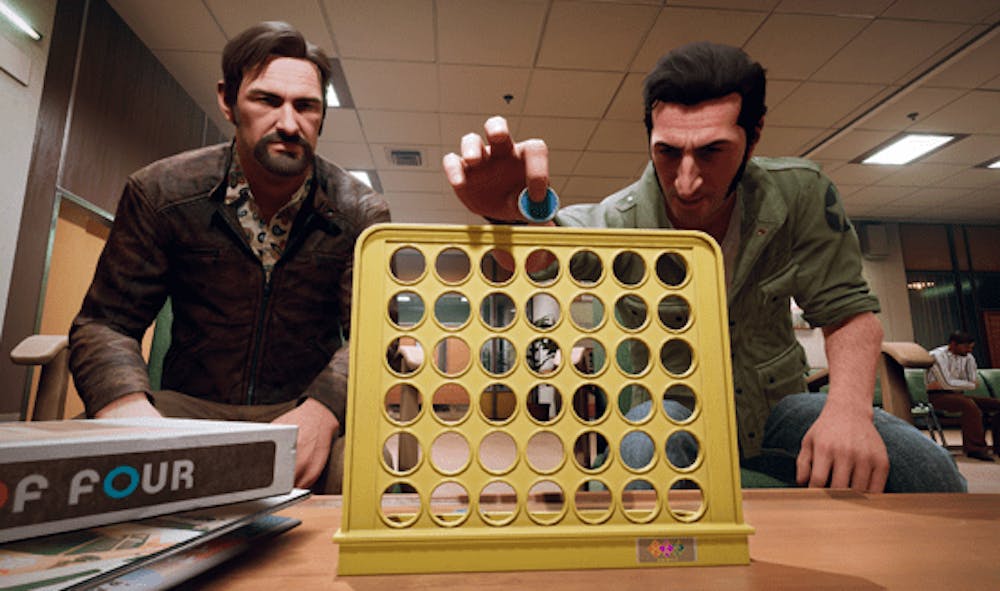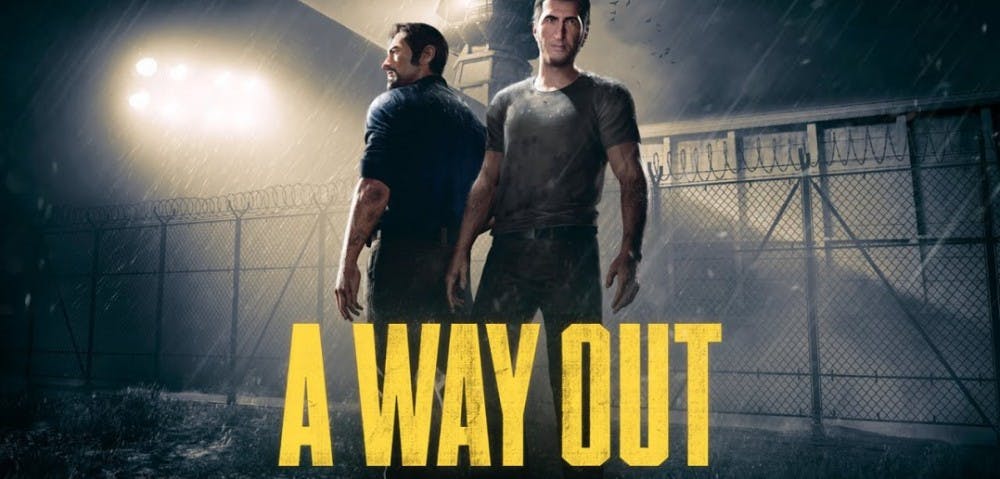Disclaimer: This playthrough is based on the PS4 version of the game.
As my co-op partner and I approached the climax of A Way Out, the cinematic 1970’s-set prison-break adventure from Hazelight Studios, I thought it had ran out of steam. I was instantly hooked for about the first five hours, which does a terrific job of blending drama with action, and emotion with lighthearted moments. In that span of time, my friend and I rarely went through the same style of gameplay twice, and I had already gotten to know and appreciate Vincent, the more diplomatic and reserved type of the two main playable characters in this mandatory two-player story. But right away, we were head-first in a cliched sequence that I have seen hundreds of times before in previous games and movies. I thought that A Way Out had ran out of surprises. But then, the game had a twist that I was not expecting. I won’t spoil anything about the finale, but understand this: A Way Out is certainly worth seeing through to the very end.
A engaging character-driven plot
The plot of A Way Out revolves around the game’s two main characters: Vincent and Leo. While Vincent is very much the reserved type of character that would rather talk his way out of dangerous situations, Leo is brash and arrogant with violent impulses. It begins with both characters being put into prison for crimes that they didn’t commit. So, they plan on breaking out of prison in the hopes of taking down the one man that inflected such grievances and pain onto their lives.

Image from wccftech
A Way Out’s revenge-driven plot is structured through flashbacks that show how Vincent and his next-cell-neighbor Leo ended up in this circumstance. The story eventually catches up to them being aboard a plane and continues on from there. It flows through like a movie, and sometimes it feels like one too, despite having an estimated runtime of six to eight hours longer than an average movie that you see in theaters. You will spend much of the game’s runtime watching cutscenes with your controller out of your hands. But you’re also free to walk around in many of these moments, with the game screen being split to accommodate both players’ ability to move and discover.
Both Leo and Vincent each have believable motivations that become more clear as the story unfolds. Even some of the voice actors’ performances improve, with much of the dialogue delivery being wooden and uncomfortable in the early scenes. It’s as if the characters have to get to understand one another, just as we start to get to know them ourselves.
It’s interesting to talk to the same NPC with Leo and Vincent separately, one after the other, because while the conversation will usually end the same way, the paths of these chats are completely different. While Leo is more sarcastic and violent, Vincent will come up with an idea to talk his way out of a serious situation. One example comes from a scene in a hospital where a curious hospital worker creates a tense moment that could end in either Leo or Vincent’s way. Leo will want to knock the guy out, while Vincent will want to pretend to have a highly contagious disease.
Cooperative moments of play with somewhat out of place minigames
A Way Out is littered with small cooperative moments outside of dialogue, like having to tap X simultaneously to bust through a door together, or one person splashing around in a pond to chase the fish toward the other player holding a spear.

Image from PlayStation Lifestyle
But even though it’s focused on its story sequences, A Way Out is certainly not a “walking simulator”-style game. In fact, it’s more like a collection of largely enjoyable minigames. Sometimes you’re sneaking around in tall grass, choking out bad guys. Other times you’re punching people from a 2.5D side-scrolling camera view reminiscent of the film Oldboy. You can end up driving a car, or throwing darts, or playing a banjo, or shooting hoops, or arm wrestling, or fishing, or… well you get the point. All of that variety, however, is a double-edged sword. Though this abundance of activities often left me smiling and excited, the trade-off is that none of them control and feel as good as games dedicated to these ideas. “Clunky” is probably the best description of some of the worst minigames A Way Out has, with the gunplay mechanics feeling particularly subpar, especially since we live in the age of spectacularly polished shooters.
None of them are A Way Out’s specialty, though. Instead, it focuses primarily on its story and the intertwining cooperative gameplay with the characters of Leo and Vincent themselves, and in these key areas it largely succeeds. Does the timing on certain moments seem implausibly convenient? Yes. Do the two men end up escaping unharmed from seemingly impossible scenarios? Sure.
The prison-breaking pair don’t always get along, though, and they even compete at points, just like real friends would, which creates some fun player-versus-player moments. Neither my co-op partner nor I would want to give in during our button-mashing arm-wrestling match, even though it has no bearing on the game or the story, and I felt some genuine disappointment in losing to my co-op partner in Connect Four (twice). At times, it felt like my friend and I were really occupying these characters.
Cinematic action set-pieces

Image from CinemaBlend
A Way Out’s finest moments come when it is at its most cinematic. The excellently choreographed construction yard scene, for example, uses multiple camera angles, including an “overhead” shot as controls are cleverly traded back and forth between Leo and Vincent, while the aforementioned ending blends cinematography and gameplay in clever ways. And a back-to-back climb up a tall maintenance shaft requires the utmost cooperation and communication that had us tense at every misstep. It was the absolute peak of the mandatory cooperative gameplay that’s enforced here. And generously, you get a free download token to give to a friend, so that you only have to buy one copy to play online.
If you go into A Way Out thinking that its mandatory two-player co-op concept is simply a gimmick, you’ll likely come out of it realizing that it couldn’t have been done in any other way. Vincent and Leo’s journey will make you and a friend perform tasks together that are both ordinary and dramatic. The final result is a memorable, action-packed, and cinematic adventure that feels similar to other adventure games made by game studios like Telltale; if Telltale had delved much deeper into game mechanics instead of having awkward animations.

Featured Image from Electronic Arts
For more entertainment related content, visit us at Byte Bsu!



















